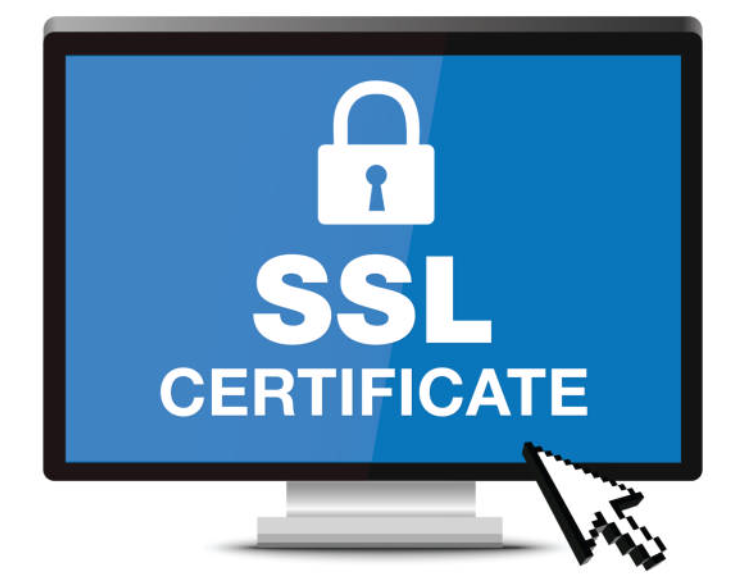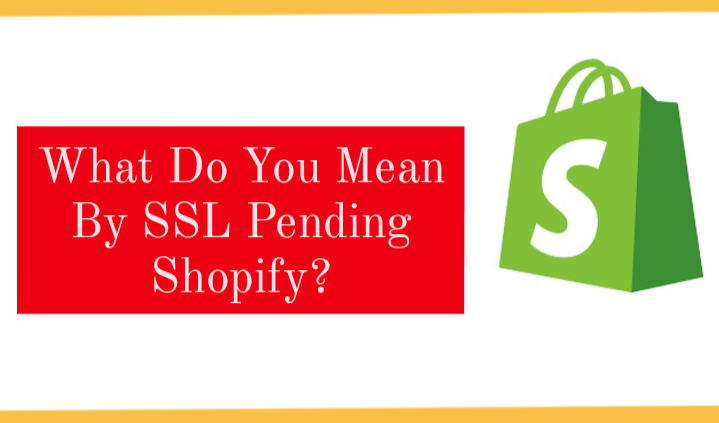In this post, we’ll tell you what is SSL Pending Shopify.
As many as 2,200 cyberattacks occur every day, and more than a million people are hacked every year!
In the case of a shop owner on Shopify, you certainly don’t want customers to be hacked. This article’s subject, Secure Socket Layer, is one of several reasons why data breaches occur.
To you, it may appear to be an ambiguous and esoteric phrase. It’s possible that your Shopify business could become one of the thousands of websites a year that suffer a data breach. If so, keep reading.
What is an SSL Certificate?
SSL (Secure Sockets Layer) is the acronym for this technology. To put it another way, it’s a protocol that ensures the safety of your internet connection and the confidentiality of any sensitive personal data that is sent between your computer and the internet.
To ensure that a website is legitimate, SSL encrypts communication between the browser and the server before it is sent.

SSL certificates are now required for all organizations with websites in order to ensure the privacy and security of online transactions and client data.
Websites with an SSL certificate have a padlock icon in the address bar or HTTPS as a sign that their visitors’ private information is safe.
SSL certificates are the best way to ensure that your website is protected from outside influence, so make sure to get one when you register your Shopify domain name.
How can I make Shopify use SSL?
An SSL certificate for your Shopify site doesn’t need much effort. A free SSL (or TLS – Transport Layer Security) certificate for each of your store’s URLs will be provided to you by Shopify when you set up a new online store on the platform.
After that, be sure to switch over all of your website’s URLs to use HTTPS:// instead of HTTP://. In order to accomplish this, you must:
- Update the URL redirects you wish to update.
- Select Edit redirection from the menu
- Changes need to be made
- Save your work by clicking the Save button.
Despite the fact that this is a rather basic procedure, the updates are made quickly. These are typically completed in less than 48 hours.
If, after completing the preceding steps, you still do not see a padlock icon in the address bar, your SSL encryption has failed. An “SSL Pending” or “SSL Unavailable” notice will appear. There are a variety of possible causes for this error, including:
- domain misconfiguration;
- content errors;
- site refresh delays.
What do you mean by SSL Pending Shopify?
It’s possible that when you generate the Shopify website certificate, you’ll get an SSL pending error message.
Even if the certificate is still being processed, you may receive this error notice. This is a regular occurrence.

SSL pending on Shopify indicates that your certificate has not yet been issued by the certificate authority. You can still gain access to your website even if your security settings aren’t updated.
Despite issuing your SSL certificate, Shopify has yet to verify that your content and server adhere to encryption protocols. There are a few things you can do in the following paragraphs to aid with this issue.
How do fix the Pending or Unavailable Certificates?
In addition to the pending SSL status, you may encounter an additional issue while applying for an SSL certificate. In this case, you’ll see the SSL unavailable error message, which means exactly what it says.
But don’t worry, you can still use Shopify’s free encryption in this circumstance. Essentially, this implies that Shopify is unable to issue a certificate to your website because there are setups or material on it that are insufficiently secure.
You only need to follow these methods to deal with similar problems:
1. Wait for 48 Hours
If your website’s content complies with the encryption protocol’s standards but you’re still experiencing issues, give it 48 hours and see if that helps. For the most part, the process of encrypting your website takes roughly two days.
Your SSL certificates need time to be re-verified or reissued when you make changes to your web server or custom domain’s settings.
2. Set Up your Domain Record
When an online business owner uses Shopify to create a custom domain, the domain appears automatically in the Shopify admin panel. After then, the panel handles the setups on its own.
3. However, if you don’t have a Shopify-created custom domain, you’ll need to add it yourself.
4. The correct IP address for Shopify is 23.227.38.65, so make sure you’re A record is pointing to that address. Use caution when creating A records for several domains. Any additional A record entries on Shopify will result in the SSL being deactivated
5. Unavailable Error
Your CNAME entries should include shops.myshopify.com along with the correct IP address.
6. Use IPv4 Instead of IPv6
Shopify’s web hosting characteristics are unrelated to IPv6 (AAAA) records in any URL address. Consider using IPv4 A records instead of SSL certificates if you’re having issues obtaining them.
7. Do Not Use CAA Record
The use of CAA Records on Shopify is discouraged since doing so may prevent your website from obtaining a secure HTTPS:// address. Even if you must provide CAA records, include the following certificate authority in each record:
letsencrypt.org,
digicert.com, and
globalsign.com
A particular HTTPS:// URL can be verified by these authorities to ensure that it has not been deleted.
Here are the actions that can be followed in order to fix the SSL pending error, which is distinct from the SSL issue that cannot be resolved. The following are the key measures to take:
Step One:
Make the necessary changes to the records pertaining to your name. Consider checking your A records if you are certain that your website’s DNS configuration is right but are still receiving SSL pending errors. Shopify’s IP address, 23.227.38.65, should be pointed to directly.
Step Two:
Create CNAME Records. It should always be a domain name rather than an IP address when creating CNAME records for Shopify-specific CNAME records.
Step Three:
Make sure you don’t put too much pressure on Shopify by making too many support requests. It can take up to 48 hours for Shopify to set up an HTTPS:// address.
If you intervene during this procedure, it will take two more days for the processing to complete. Wait patiently for your secure website to arrive sooner rather than later.
Why you should have an SSL certificate on your Shopify Store
Finally, let’s take a look at the advantages of an SSL certificate for Shopify online store owners.
SSL certificates are designed to develop confidence and protect server-client communications, as previously stated.
Personal information is not at risk of being stolen or tampered with by thieves when visitors see the padlock in the address line.
Moreover, it makes your website real and affirms your identity, making it more trustworthy and trustworthy.
Quick Links:
- How To Delete a Shopify Store? Ultimate Guide
- How To Cancel Shopify Subscription? [Get a Refund]
- How To Set Up An Affiliate Program For Your Shopify Store?
Conclusion: What do you mean by SSL Pending Shopify?
We hope that this guide has helped you understand what SSL pending means on Shopify.
If you have any doubt let’s comment below.


